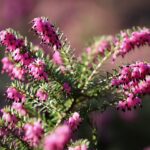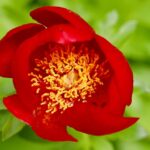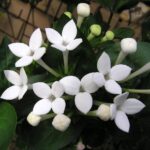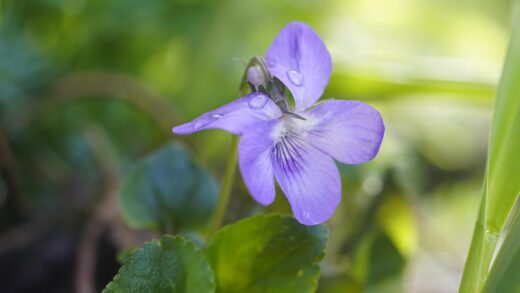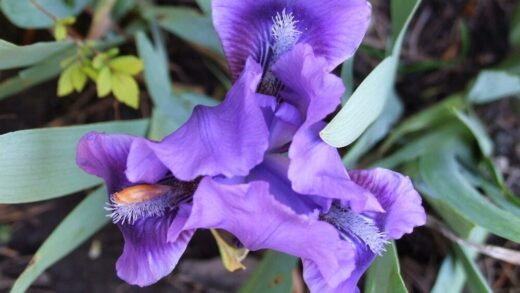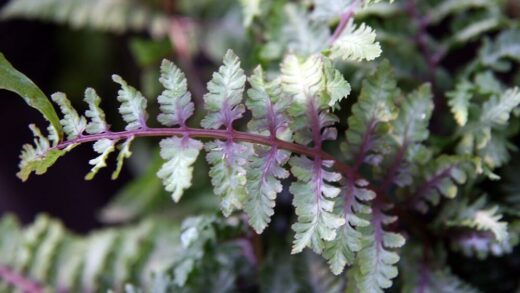The everlasting pea is celebrated in the horticultural world for its robust constitution and general resistance to many common garden ailments. However, like any plant, it is not entirely immune to problems and can occasionally fall victim to certain diseases and pests. Being able to identify and effectively manage these potential issues is key to maintaining a healthy, vibrant, and long-flowering vine. Most problems can be prevented or controlled through good cultural practices, such as proper siting, ensuring good air circulation, and maintaining soil health, which create an environment where the plant can thrive and naturally fend off threats.
Proactive prevention is always the most effective strategy in disease and pest management. The foundation of a healthy plant begins with its location and the condition of its soil. Planting the everlasting pea in a site that receives full sun and has excellent air circulation is the first line of defense against fungal diseases, which thrive in damp, stagnant conditions. Furthermore, ensuring the soil is well-drained is critical to prevent root rot, one of the few fatal conditions that can affect this otherwise hardy perennial. Overcrowding plants should be avoided as it restricts airflow and creates a humid microclimate ideal for pathogens.
Good garden hygiene plays a significant role in minimizing the risk of problems. This includes regularly removing any dead or yellowing leaves from the plant and keeping the area around its base free of weeds and fallen debris. This material can harbor fungal spores and provide a hiding place for pests like slugs and snails. At the end of the growing season, it is crucial to cut back and dispose of all the dead top growth. This action removes any overwintering fungal spores or insect eggs, ensuring a clean start for the plant in the following spring.
A healthy plant is inherently more resistant to attacks from pests and diseases. Providing the everlasting pea with its basic cultural requirements—adequate sunlight, appropriate watering, and well-drained, moderately fertile soil—is the best way to ensure it remains vigorous and resilient. A stressed plant, whether from drought, waterlogging, or nutrient deficiency, will be far more susceptible to problems. Therefore, proper care is not just about aesthetics; it is a fundamental component of an integrated pest and disease management plan.
When problems do arise, it is important to identify them correctly in order to apply the most effective and least invasive treatment. Regular inspection of your plants allows for early detection, which is crucial as most issues are much easier to control when caught in their initial stages. Check the upper and lower surfaces of the leaves, the stems, and the flowers for any signs of trouble, such as discoloration, distortion, a sticky residue, or the presence of the pests themselves. Prompt and targeted action can often prevent a minor issue from becoming a major infestation.
Common fungal diseases
By far the most common disease to affect the everlasting pea is powdery mildew. This fungal disease is easily recognizable by the characteristic white, dusty, or powdery coating that appears on the surfaces of leaves, stems, and occasionally flower buds. While it is rarely fatal, a severe infection can reduce the plant’s photosynthetic ability, causing leaves to yellow and die prematurely, and can detract significantly from the plant’s ornamental value. Powdery mildew thrives in conditions of high humidity, warm days, cool nights, and poor air circulation.
Prevention is the best approach to managing powdery mildew. As mentioned, providing ample spacing between plants and training the vine onto a trellis to create good airflow are critical preventative measures. It is also advisable to water the plant at its base, avoiding overhead irrigation that wets the foliage, as this can encourage spore germination. If powdery mildew does appear, remove and destroy the most heavily infected leaves to reduce the source of spores. For more widespread infections, horticultural oils, neem oil, or a simple homemade spray of one tablespoon of baking soda and a half teaspoon of liquid soap in a gallon of water can be effective treatments when applied regularly.
Root rot is another potential issue, though it is a direct result of poor growing conditions rather than a specific airborne pathogen. This problem occurs when the plant is grown in heavy, compacted, or waterlogged soil. The excess moisture deprives the roots of oxygen, causing them to decay and die. Symptoms above ground include wilting (even when the soil is wet), yellowing leaves, stunted growth, and the eventual collapse of the plant. The base of the stems may become dark and mushy.
There is no effective cure for a plant that is severely affected by root rot; prevention is the only viable strategy. It is absolutely essential to plant the everlasting pea in a location with excellent drainage. If you have heavy clay soil, it must be amended with copious amounts of organic matter like compost to improve its structure and porosity before planting. For areas with persistently wet soil, consider planting in a raised bed, which provides the well-drained environment that this plant requires to thrive.
Prevalent insect pests
Aphids are the most frequent insect pests you are likely to encounter on the everlasting pea. These are small, pear-shaped, sap-sucking insects that can be green, black, pink, or gray. They tend to cluster on the tender new growth, such as shoot tips and flower buds, feeding on the plant’s nutrient-rich sap. A heavy infestation can cause new growth to be distorted, curled, or stunted, and their feeding can reduce the overall vigor of the plant. Aphids also excrete a sticky substance called honeydew, which can lead to the growth of sooty mold.
Managing aphids is often straightforward, especially if they are detected early. For a minor infestation, a strong spray of water from a garden hose is often sufficient to dislodge them from the plant. If they persist, insecticidal soap or horticultural oil can be sprayed directly onto the aphids, which works by smothering them. These treatments are most effective when applied thoroughly, ensuring contact with the pests. Encouraging natural predators like ladybugs, lacewings, and hoverflies into your garden by planting a diversity of flowering plants will also provide excellent long-term, natural aphid control.
Slugs and snails can be particularly damaging, especially to young everlasting pea seedlings in the spring. These mollusks are nocturnal feeders and are attracted to the soft, tender foliage, chewing ragged holes in leaves and sometimes devouring entire seedlings overnight. They thrive in damp conditions and often hide under debris, stones, or low-lying foliage during the day. Their presence is often confirmed by the silvery slime trails they leave behind.
There are several methods for controlling slugs and snails. Creating a less hospitable environment by cleaning up debris from around the base of the plant is a good first step. Physical barriers, such as a ring of crushed eggshells, diatomaceous earth, or copper tape placed around the plant, can be very effective. Beer traps, consisting of a shallow container of beer sunk into the soil, are also a popular and effective way to trap and drown them. For severe infestations, organic slug pellets containing iron phosphate can be used safely around pets and wildlife.
Other potential problems
Spider mites are another type of sap-sucking pest that can occasionally trouble the everlasting pea, particularly in hot, dry weather. These are tiny arachnids, not insects, and are often difficult to see with the naked eye. The first indication of their presence is often fine webbing on the undersides of leaves and a stippled or speckled appearance on the leaf surface. As the infestation progresses, the leaves may turn yellow or bronze and eventually dry up and fall off.
Like with aphids, a strong jet of water can help to disrupt spider mite populations. Since they thrive in dry conditions, increasing the humidity around the plant by regularly misting the foliage can also help to deter them. If the infestation is severe, applications of insecticidal soap or horticultural oil are effective, but it is crucial to achieve thorough coverage, especially on the undersides of the leaves where the mites congregate. Neem oil is also a good option as it acts as both a miticide and a repellent.
While not a disease or a pest, a common issue gardeners face with the everlasting pea is a lack of flowers. If a healthy-looking plant with plenty of lush, green foliage fails to produce blooms, the cause is almost always an excess of nitrogen. This often happens when the plant is given a high-nitrogen fertilizer or is planted in soil that is overly enriched with fresh, un-rotted manure. This nutrient imbalance encourages the plant to put all its energy into vegetative growth at the expense of flower production.
To remedy a non-blooming plant, cease all fertilization immediately. You can try to encourage flowering by adding a phosphorus-rich amendment like bone meal to the soil. In some cases, lightly pruning some of the foliage can help to redirect the plant’s energy. However, the most effective solution is often simply patience, allowing the plant to use up the excess nitrogen in the soil. To prevent this issue from occurring in the future, always be very conservative with feeding and rely primarily on compost and balanced, low-nitrogen bloom-booster formulas if any fertilizer is needed at all.
Integrated pest management
An Integrated Pest Management (IPM) approach is the most sustainable and environmentally responsible way to deal with diseases and pests on the everlasting pea. IPM is a holistic strategy that combines various techniques to keep pest and disease populations at an acceptable level, rather than aiming for complete eradication. It prioritizes the least toxic methods first, resorting to chemical controls only as a last resort. This approach begins with prevention through good cultural practices as its foundation.
The second tier of IPM involves physical and mechanical controls. This includes actions like hand-picking larger pests, using water sprays to dislodge insects, setting traps for slugs, and pruning out diseased plant parts. Using physical barriers, such as copper tape for snails or row covers for young seedlings, also falls into this category. These methods are targeted and have minimal impact on the wider garden ecosystem.
The third level is biological control, which involves encouraging a healthy population of natural predators and beneficial insects in your garden. By planting a variety of flowers that provide nectar and pollen, you can attract ladybugs, lacewings, hoverflies, and predatory wasps, all of which are voracious predators of pests like aphids. Allowing nature to create its own balance is a powerful, long-term pest management strategy that requires minimal ongoing effort.
The final and last-resort tier of IPM is the use of chemical controls. If a pest or disease problem becomes severe and threatens the survival of the plant, a targeted application of the least toxic pesticide or fungicide may be necessary. This includes options like insecticidal soaps, horticultural oils, and neem oil, which have a lower impact on beneficial insects and the environment compared to broad-spectrum synthetic chemicals. Always identify the problem accurately before spraying, and apply the product strictly according to the label instructions.

